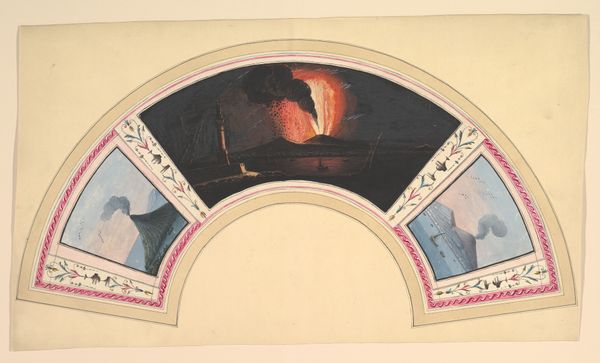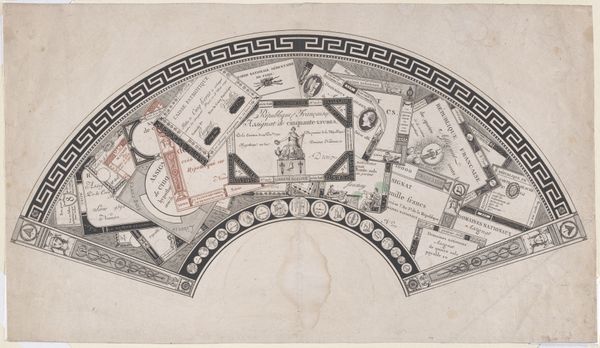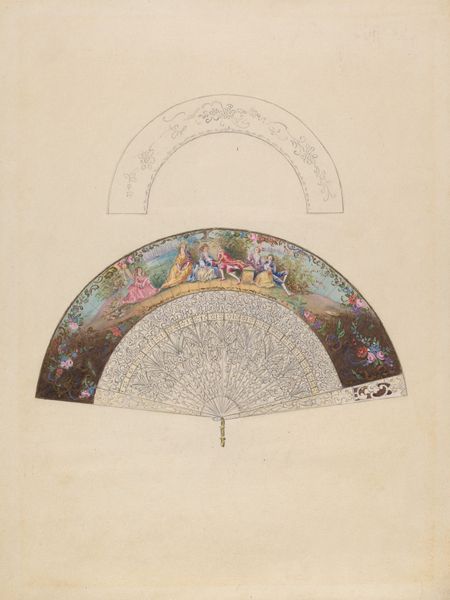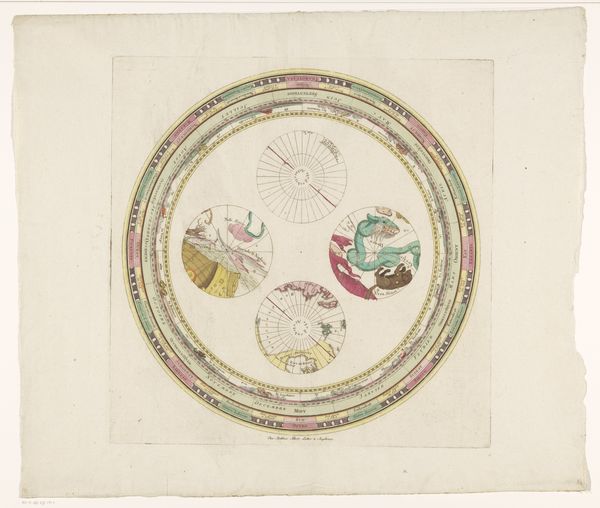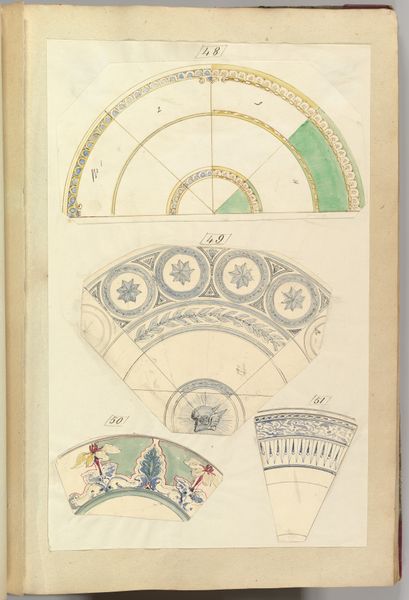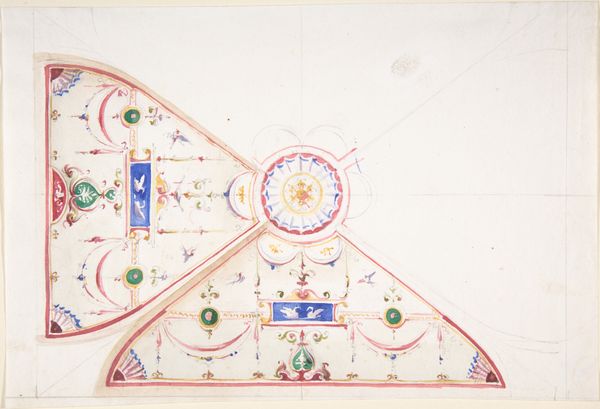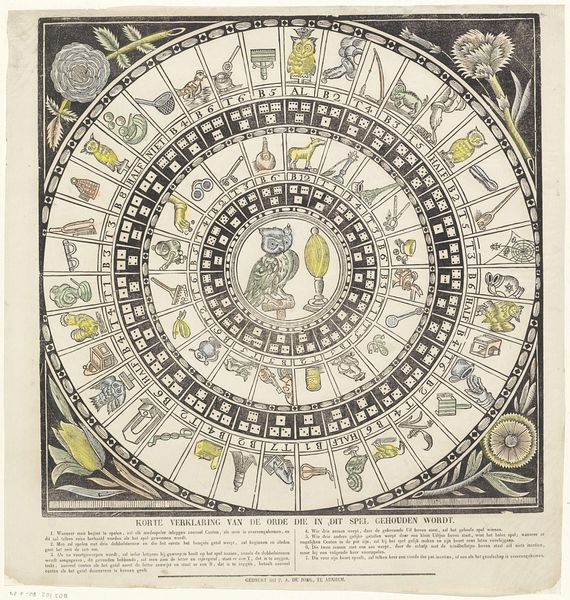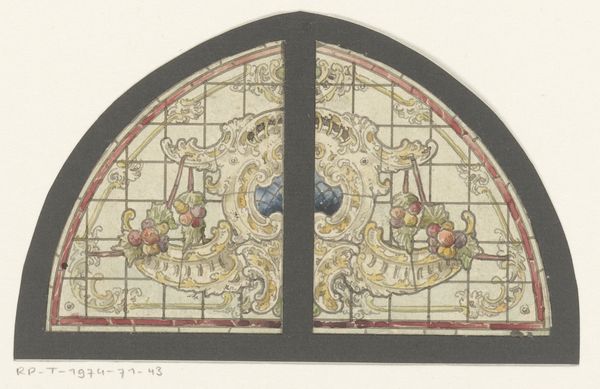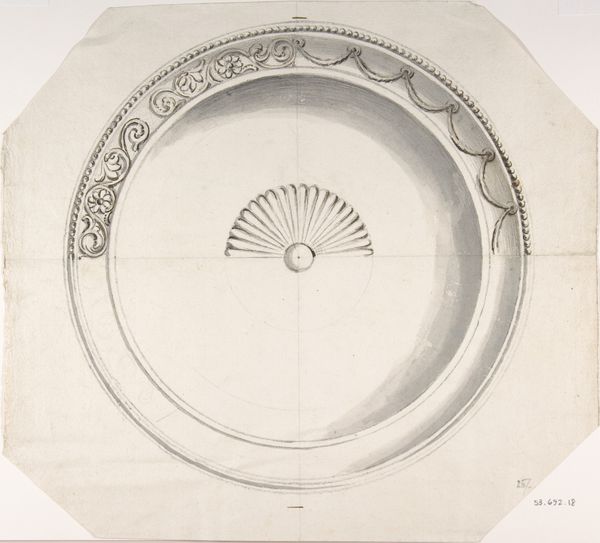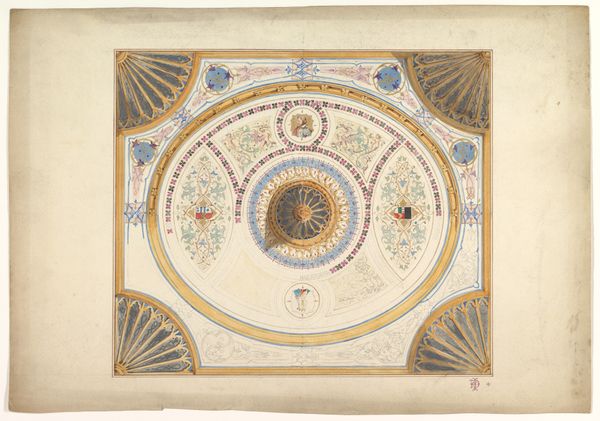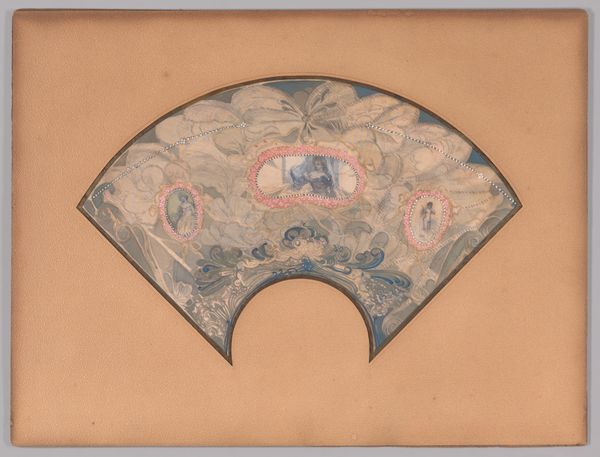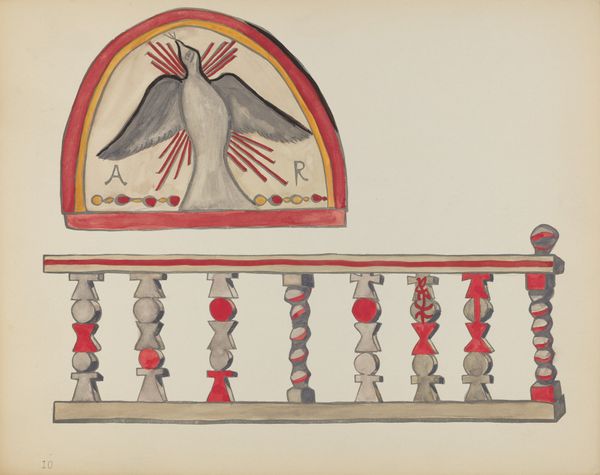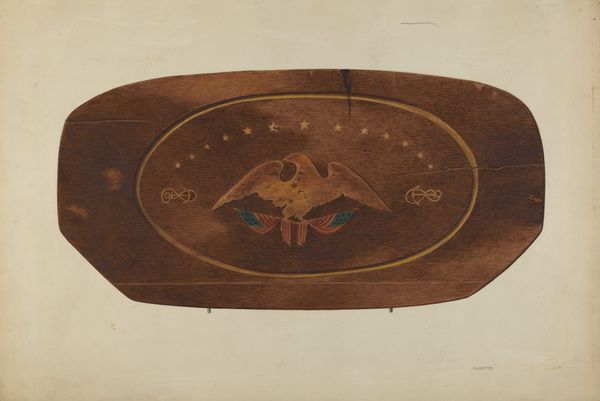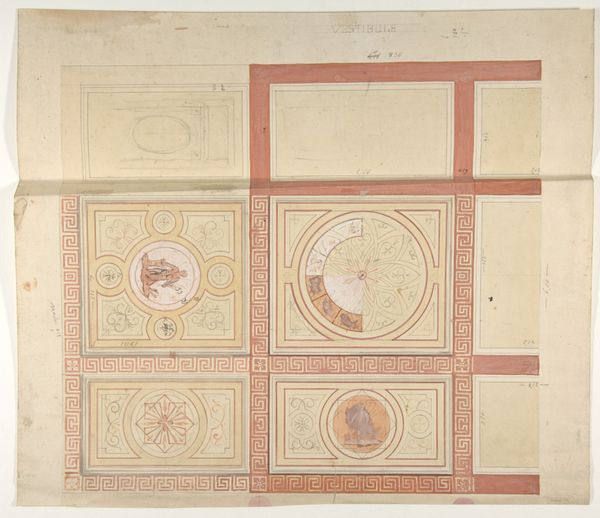
Fan Design with the Pantheon and the Colosseum 1700 - 1800
0:00
0:00
drawing, coloured-pencil, print, watercolor
#
drawing
#
coloured-pencil
# print
#
caricature
#
watercolor
#
coloured pencil
#
cityscape
#
watercolour illustration
#
miniature
#
watercolor
Copyright: Public Domain
Curator: This object, "Fan Design with the Pantheon and the Colosseum," dates from somewhere between 1700 and 1800, though its creator is currently unknown. The design utilizes watercolor and coloured pencil, and interestingly incorporates print elements. It is currently located at the Metropolitan Museum of Art. Editor: My first thought is the material delicacy of this piece! Look at the paper’s subtle tone. It makes me think about the craft processes, the repetitive movements of a printmaker, the focused labor that went into it. What purpose would this beautiful fan serve, for whom? Curator: Right, this fan presents us with an interesting convergence of power, gender, and class. Its creation signifies the commodification of leisure, during the peak of the Grand Tour era, typically enjoyed by privileged European men visiting Italy. Editor: I agree; the craftsmanship involved elevates the raw materials into something symbolic of status. How does the choice of subject--the Pantheon and Colosseum--tie into ideas of colonialism and capitalism during that time? Curator: It does. The Roman monuments encapsulate Europe's appropriation of antiquity. Placing these monumental structures within the ornamental space of the fan implies that Italy—its history, its architectural icons—were reduced to exotic decoration in service of northern Europe’s cultural identity. It becomes a symbol, then, of their access, ownership, and ultimately, of empire. Editor: So, a subtle power dynamic is embedded even in this delicate object! The fan itself is interesting. It is shaped by gendered labor: likely crafted, owned, and operated by women but reflecting themes chosen by men. Curator: Precisely, so in a way this innocuous design encapsulates Europe’s socio-political structures of the era. It demonstrates how artistic interpretation and the objects we create, even in so-called decorative arts, are products of—and perpetuate—cultural values and the dominance of certain social classes. Editor: Reflecting on materiality and production methods, combined with historical context allows for understanding and critiquing our historical systems. Curator: And reminds us that nothing exists in isolation. Considering every object and how it contributes to historical narratives—of gender, power, and place—reveals that beauty is but one dimension.
Comments
No comments
Be the first to comment and join the conversation on the ultimate creative platform.
